Winkers, Blinkers
Leather winkers and blinkers are a common feature on vintage figures. Frank Marshall installed them on the figure that was to become Chuck Norwood. Years later Bill DeMar, Chuck's ventriloquist, replaced the leather. Now, even more years later, I am doing it again.
After many starts and restarts, I have the blinkers installed. I've discussed the use of leather for moving skin parts with other figure makers, among them Clinton Detweiler and Ray Guyll. They have a lot of experience with fiuremaking, and they have been very helpful with answers to my questions. I've installed leather blinkers in other figures.
In this case I had two sources to draw from in deciding how to configure the blinkers. I have many pictures of Marshall figures with one or two eyes closed. I've examined Marshall figures up close, too. Then I had Chuck Norwood, with the replacement blinkers that Bill installed, which now themselves need replacement.
Should I attempt to recreate the original look of the Marshall as it came out of Frank's shop, or should I attempt to capture the look of Chuck as he came to me from Bill?
It depends on which master you serve. A purist collector would say, "Give it the Marshall look to preserve its value as a collectible." But the owner/operator of this particular figure is not interested in its collectibility. He uses Chuck in his work and wants the look and feel to which he is accustomed.
So, another question is, how similar are Bill's retrofitted blinkers to the original? I can't really say, because I have no closeup pictures of Chuck Norwood blinking with his original blinkers.
I compared how he looked when I got him to pictures and memories of other Marshall figures. What differences are there?
Two, mostly.
Virtually all the examples of Marshalls with closed eyes reveal two significant eyelid differences. First, the eyelids are heavily shaded with eye shadow that does not blend with the face above the eyeholes. Second, there is a defined seam where the upper rims of the eyelids attach to the upper half of the eyeholes, which indicates that the leather is attached inside the head rather than on the outside and blended in.
Chuck, on the other hand, has eyelids that blend into his face. The colors are carefully blended and there are no seams. This feature is one of Chuck's defining characteristics. When he closes his eyes, the effect is stunning.
Of course, when you look at pictures you cannot be sure whether you are seeing the original figure or a rennovation. Danny O'Day, for example, has been redone many times. Jimmy Nelson tells us that the original Marshall paint job was designed for harsh stage and B&W TV lights. Lots of orange. His paint job today is more natural and meant to be pleasing for personal appearances.
So, I called Bill and asked if Chuck's blinker setup had been changed somewhere along the way. He said no, that Frank made Chuck the way we are used to seeing him. He added that other figuremakers and ventriloquists who are familiar with Marshall's work—John Arvites, Ray Guyll, and Johnny Main, for example—observe that Chuck is unlike most Marshalls they have seen and owned.
This is good news. I can serve both the purists and the pragmatists. Chuck will look very much like he did when new. At least around the eyes, he will. Bill did quite a facelift on Chuck so he wouldn't look like the garden variety Nosey. Bill wanted a unique figure that definitely does not call to mind other well-known Marshall figures such as Jerry Mahoney and Danny O'Day. He extended Chuck's nose and filled in the cleft in his chin and the dimples.
Here's Chuck with open and closed eyes as the blinker part of his reconstruction is underway.


After many starts and restarts, I have the blinkers installed. I've discussed the use of leather for moving skin parts with other figure makers, among them Clinton Detweiler and Ray Guyll. They have a lot of experience with fiuremaking, and they have been very helpful with answers to my questions. I've installed leather blinkers in other figures.
In this case I had two sources to draw from in deciding how to configure the blinkers. I have many pictures of Marshall figures with one or two eyes closed. I've examined Marshall figures up close, too. Then I had Chuck Norwood, with the replacement blinkers that Bill installed, which now themselves need replacement.
Should I attempt to recreate the original look of the Marshall as it came out of Frank's shop, or should I attempt to capture the look of Chuck as he came to me from Bill?
It depends on which master you serve. A purist collector would say, "Give it the Marshall look to preserve its value as a collectible." But the owner/operator of this particular figure is not interested in its collectibility. He uses Chuck in his work and wants the look and feel to which he is accustomed.
So, another question is, how similar are Bill's retrofitted blinkers to the original? I can't really say, because I have no closeup pictures of Chuck Norwood blinking with his original blinkers.
I compared how he looked when I got him to pictures and memories of other Marshall figures. What differences are there?
Two, mostly.
Virtually all the examples of Marshalls with closed eyes reveal two significant eyelid differences. First, the eyelids are heavily shaded with eye shadow that does not blend with the face above the eyeholes. Second, there is a defined seam where the upper rims of the eyelids attach to the upper half of the eyeholes, which indicates that the leather is attached inside the head rather than on the outside and blended in.
Chuck, on the other hand, has eyelids that blend into his face. The colors are carefully blended and there are no seams. This feature is one of Chuck's defining characteristics. When he closes his eyes, the effect is stunning.
Of course, when you look at pictures you cannot be sure whether you are seeing the original figure or a rennovation. Danny O'Day, for example, has been redone many times. Jimmy Nelson tells us that the original Marshall paint job was designed for harsh stage and B&W TV lights. Lots of orange. His paint job today is more natural and meant to be pleasing for personal appearances.
So, I called Bill and asked if Chuck's blinker setup had been changed somewhere along the way. He said no, that Frank made Chuck the way we are used to seeing him. He added that other figuremakers and ventriloquists who are familiar with Marshall's work—John Arvites, Ray Guyll, and Johnny Main, for example—observe that Chuck is unlike most Marshalls they have seen and owned.
This is good news. I can serve both the purists and the pragmatists. Chuck will look very much like he did when new. At least around the eyes, he will. Bill did quite a facelift on Chuck so he wouldn't look like the garden variety Nosey. Bill wanted a unique figure that definitely does not call to mind other well-known Marshall figures such as Jerry Mahoney and Danny O'Day. He extended Chuck's nose and filled in the cleft in his chin and the dimples.
Here's Chuck with open and closed eyes as the blinker part of his reconstruction is underway.




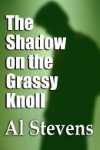
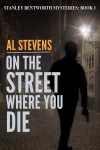
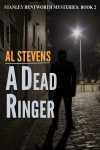
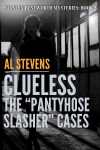
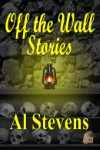

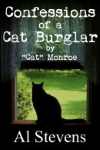

<< Home